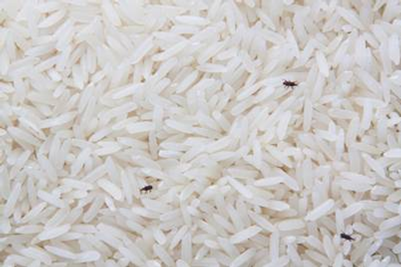Introduction
Heavy metals, such as mercury, lead, arsenic and cadmium, are naturally present in the environment. This has, in turn, resulted in the presence of heavy metals in our food, especially seafood. As ingestion of such heavy metals in the long term may lead to health problems, consumers are advised to take a varied and balanced diet to minimise their exposure to heavy metals.
This article provides information on heavy metals in seafood.
How do heavy metals enter our food chain?
Heavy metals are found naturally in the earth's crust and in industrial pollutants. Some heavy metals and their related chemical compounds dissolve easily in water, while others exist in particulate form. Hence, low amounts are present in water, soil and the seabed.
Heavy metals subsequently enter our food when the animals and plants that we eat come into contact with water, soil and the seabed. Shellfish and predatory fish can contain a higher amount of heavy metals in their bodies. This is because shellfish mainly grow on the ocean floor and can accumulate heavy metals that have sunk to the bottom, while predatory fish are unable to excrete heavy metals out of their bodies as fast as they ingest them through their consumption of other seafood.
How do heavy metals affect our health?
Long-term intake of high levels of arsenic and cadmium may lead to health problems such as skin lesions, nerve damage, skin cancer and diseases of the blood vessels. Arsenic exists primarily in two forms - organic arsenic and inorganic arsenic. Arsenic in seafood is mainly organic arsenic, which is the non-toxic form.
Lead and mercury are toxic, particularly to infants and children. Ingesting high levels of lead and mercury can affect the development of the nervous system, particularly in children, infants and developing foetuses (exposed through ingestion by the pregnant mother).
While these health implications may sound alarming, severe poisoning due to consumption of seafood containing heavy metals is rare except possibly in the event of a severe environmental pollution. In addition, fish remains a key source of nutrition such as protein, omega-3-fatty acids, iron, vitamin D and vitamin B12, which are critical for a developing foetus; pregnant women are advised to continue eating fish, except predatory fish.
What can we do to reduce exposure to heavy metals in our seafood?
Through a joint responsibility approach to food safety, we can reduce consumers’ exposure to heavy metals in seafood.
As heavy metals are naturally occurring contaminants, it is not possible to eliminate them from our food. Therefore, limits on heavy metals in food are set based on the internationally accepted principle of “As Low As Reasonably Achievable” to protect consumers but without undue disruption to food supply and trade. SFA tests locally produced and imported seafood for heavy metals. To date, our tests have shown that the level of heavy metal detected in seafood sold in Singapore are acceptable.
Industry can play their part by sourcing seafood from waters that are regularly monitored by authorities in the source countries.
Consumers can follow these tips to reduce exposure to heavy metals:
Avoid excessive consumption of seafood, such as shellfish, as they accumulate higher levels of cadmium and arsenic.
Limit the consumption of predatory fish such as swordfish, shark, king mackerel (known as “batang” locally), tilefish and bigeye tuna as these fish accumulate higher levels of mercury. However, consumers (including pregnant women) are advised to continue eating other fish as it is a key source of our nutritional needs.
Purchase seafood from licensed sources. This will ensure the seafood have been sourced, stored and inspected properly before it gets to the consumers.
As cooking does not reduce heavy metal levels in food, consumers are advised to choose the type of seafood for consumption carefully.





